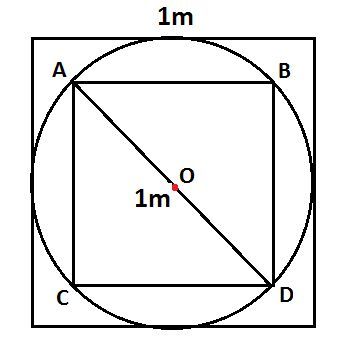Inscribe-ception
Draw a
by
square.
Then inscribe the largest possible circle within the square previously drawn.
Then inscribe the largest possible square within the circle previously drawn.
Then inscribe the largest possible circle within the square previously drawn.
Then inscribe the largest possible square within the circle previously drawn.
Then repeat the process indefinitely.
What will be the total area of all the squares drawn (in )?
The answer is 2.
This section requires Javascript.
You are seeing this because something didn't load right. We suggest you, (a) try
refreshing the page, (b) enabling javascript if it is disabled on your browser and,
finally, (c)
loading the
non-javascript version of this page
. We're sorry about the hassle.

If every alternate square was tilted diagonally the above figure is obtained.
It can then be determined that the area of each successive square would be half the area of the previous square.
Therefore the total area of all the squares drawn is 1 + 2 1 + 4 1 + 8 1 + 1 6 1 + . . . = 1 − 2 1 1 = 2 sq m.